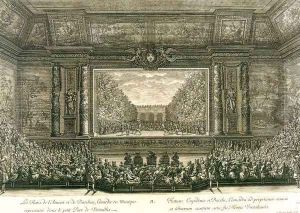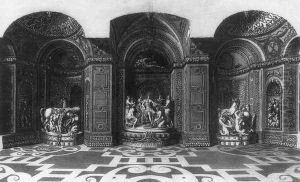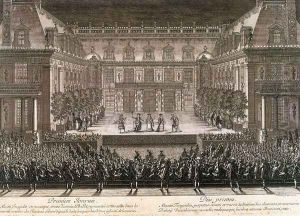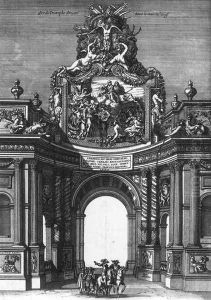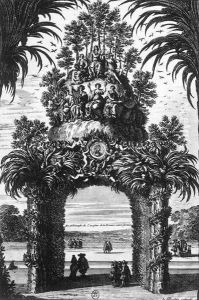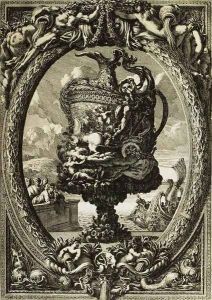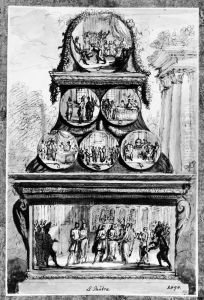Jean Le Pautre Paintings
Jean Le Pautre, born in 1618 in Paris, France, was a prolific French designer and engraver, whose work significantly contributed to the decorative arts during the 17th century, particularly within the Baroque and Rococo styles. Coming from a family with artistic inclinations—his father was a carpenter and his brother Antoine Le Pautre was an architect—Jean was initially trained by his father before embarking on an apprenticeship with a Parisian engraver. This foundational period was crucial in developing his skill set and defining his artistic direction.
Le Pautre's career was distinguished by his extensive output of over a thousand engravings, which included designs for ornaments, friezes, grotesques, vases, garden plans, and architectural elements. His work was not only influential in France but also across Europe, where his engravings circulated widely, inspiring architects and craftsmen. He was particularly known for his intricate and elaborate designs, which were characterized by their detailed depiction of nature, mythology, and daily life, blending these elements into imaginative and fanciful compositions.
In addition to his engravings, Le Pautre was involved in various architectural projects, providing designs for interiors, gardens, and buildings, though his primary legacy remains in the influence his printed works had on the decorative arts. His involvement with the Gobelins Manufactory, where he contributed designs for tapestries and other textiles, further exemplifies his versatility and impact on the decorative vocabulary of his time.
Le Pautre's work is a testament to the rich decorative trends of the 17th century in France, embodying the transition from the more rigid forms of the early Baroque to the playful and dynamic expressions of the Rococo. He passed away in 1682 in Paris, leaving behind a body of work that continues to be studied and admired for its artistic value and historical significance in the development of European decorative arts.
